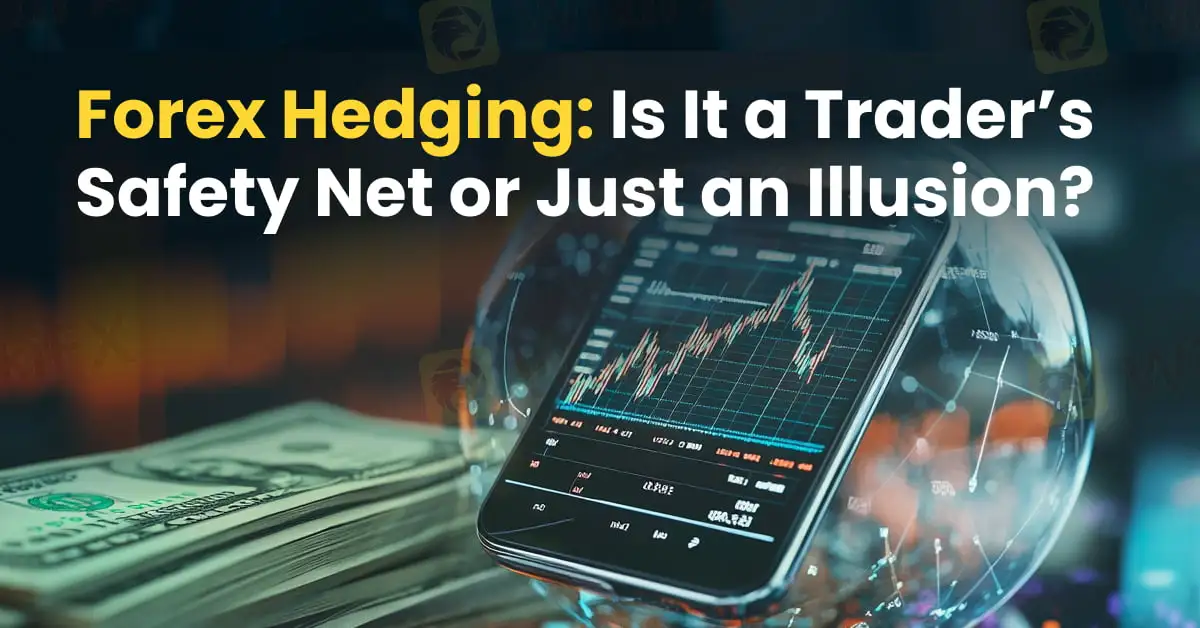简体中文
繁體中文
English
Pусский
日本語
ภาษาไทย
Tiếng Việt
Bahasa Indonesia
Español
हिन्दी
Filippiiniläinen
Français
Deutsch
Português
Türkçe
한국어
العربية
Forex Hedging: Is It a Trader’s Safety Net or Just an Illusion?
Abstract:In the volatile world of forex trading, risk is inevitable. One widely used strategy is forex hedging, which is a useful technique designed not to eliminate risk entirely, but to reduce its potential impact. As global economic uncertainty persists, understanding how hedging works could be an essential addition to a trader’s toolkit.

In the unforgiving world of forex trading, one brutal truth looms large: the market does not care about your predictions. A single unexpected headline, an unanticipated rate decision, or a sudden currency shock can wipe out days of gains in moments. Many traders freeze. Others panic. But the more experienced ones? They do not just react, but they prepare. One of the most powerful defences they rely on is hedging.

Forex hedging is a strategy used to protect a traders existing position from unfavourable movements in currency prices. It is a form of risk management, not a tool for profit generation. By opening a secondary position that moves in the opposite direction of the primary trade, a trader seeks to limit potential losses if the market turns against them.
In essence, hedging provides a cushion. It allows traders to stay in a trade while reducing their exposure to short-term volatility, preserving capital in uncertain or reactive market conditions.

There are two primary ways to hedge in the forex market: direct hedging and correlation-based hedging.
A direct hedge involves opening an opposing position on the same currency pair. For instance, if a trader is long on EUR/USD but expects short-term dollar strength, they might open a short position on the same pair to offset potential downside. While gains on one position are reduced by losses on the other, the account is protected from sharp price swings.
The second method involves using correlated currency pairs. Some currency pairs tend to move in tandem or in opposite directions. For example, EUR/USD and GBP/USD often show positive correlation due to their shared quote against the US dollar. A trader might go long on EUR/USD and short on GBP/USD to hedge against unexpected dollar strength while betting on euro outperformance relative to sterling.


The primary benefit of hedging is control. It allows traders to manage exposure and maintain open positions without needing to close them prematurely during volatile periods. Hedging can also be used to lock in profits when a trade has moved in the desired direction but uncertainty looms on the horizon.
This strategy is particularly useful during major economic announcements, elections, or geopolitical events that can cause sharp, unpredictable price action.
Hedging is not without its challenges. Opening multiple positions typically leads to increased trading costs, including spreads and commissions. Additionally, correlations between currency pairs can break down unexpectedly, reducing the effectiveness of cross-pair hedges.
There is also the psychological aspect to consider. Hedging can create the illusion of safety, encouraging overtrading or poor decision-making. In some cases, brokers restrict or prohibit direct hedging strategies depending on regulatory jurisdiction.
Finally, hedging reduces potential profits by offsetting gains with partial losses. It is a method of protection, not a profit maximiser.
Examples of Hedgeable Currency Pairs
● EUR/USD and GBP/USD: These pairs are often positively correlated, making them suitable for comparative hedging strategies.
● USD/CHF and EUR/USD: These frequently show inverse movement, useful for traders looking to hedge against dollar volatility.
● AUD/USD and NZD/USD: Given their close economic ties and similar commodity exposure, these pairs can be used to hedge regional positions in the Asia-Pacific zone.
Whether you choose to hedge or take a more directional approach, trading without a plan is gambling. Hedging is not a silver bullet, but a strategy that must be backed by sound judgement, discipline, and a clear understanding of risk.
In forex trading, the most successful traders are not always those with the highest returns, but those who know how to protect their capital when the storm hits. Whatever your strategy, always trade with a plan, manage your exposure carefully, and treat risk management as your number one priority.

Disclaimer:
The views in this article only represent the author's personal views, and do not constitute investment advice on this platform. This platform does not guarantee the accuracy, completeness and timeliness of the information in the article, and will not be liable for any loss caused by the use of or reliance on the information in the article.
Read more

SkyLine Judge Community: Appreciation Dinner Successfully Held in Malaysia
On August 1, 2025, the SkyLine Judge Appreciation Dinner was successfully held in Kuala Lumpur, Malaysia. As the first WikiFX SkyLine event in Malaysia this year, the dinner not only aimed to express sincere gratitude to expert judges, partners, and industry representatives who have long supported the development of the SkyLine Judge Community but also facilitated in-depth discussions on the future direction of forex trading safety, financial education, and industry transparency.

AssetsFX Scam Alert: 5 Troubling Signs
Forex trading has become a critical game now because of advancements in technology. Due to this Unfortunately, scam brokers have also entered in the Forex market. Therefore, you need to stay alert. This article aims to warn all traders and investors. Read carefully and stay aware.

Forex4Money: Where Your Money Goes In, But Never Comes Out!
Discover how Forex4Money traps investors with fake profit promises and blocked withdrawals. Read real complaints and protect yourself from this unregulated forex scam.

Forex Success Stories: Lessons You Can Use to Win
There can be many ups and downs even for the world’s best forex traders. However, they remain undeterred in their vision to overcome the challenges that come their way. That’s why they form part of forex success stories that continue to inspire generations. One can inherit some lessons to be among successful currency traders. In this article, we will be sharing the lessons you can use to be successful in forex trading.
WikiFX Broker
Latest News
SkyLine Judge Community: Appreciation Dinner Successfully Held in Malaysia
Think Uncle Sam Owes $37 Trillion? It's Far Worse Than That
HKMA Launches Stablecoin Licensing Rules Ahead of August 2025 Deadline
Visa Adds PYUSD, EURC, and USDG to Stablecoin Payments
Currency Calculator


